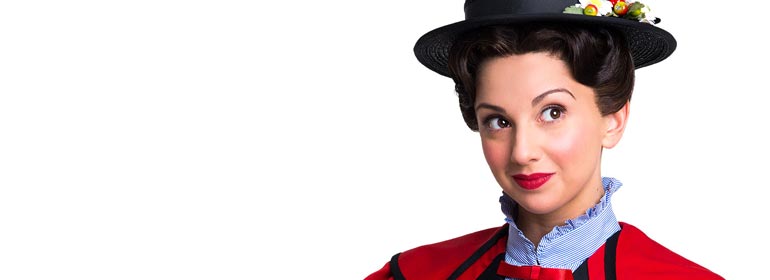The stage version of Mary Poppins pulls out all the stops to entertain, but there’s mysterious chemistry missing at its heart, says Brian Finnegan.
Watching Cameron Mackintosh’s musical version of Mary Poppins, it’s easy to see the dilemmas Downton Abbey creator, Julian Fellowes faced in adapting the 1964 film for the stage. For starters, the original is more a series of strung-together set pieces than a plot-driven narrative. And unlike almost every other Disney film, it doesn’t feature a villain to up the ante, instead opting for a gentle, almost background story about an absent father learning to be present for his children. Despite the lack of a traditional structure and tropes, the film is one of those odd gems, where performances, songs, script, direction and cinematography meld together to create a mysterious chemistry that’s made it timeless.
For the book of the musical version, first staged in London in 2004, Fellowes reverted to PL Travers’ original novels for inspiration. With all the limitations the stage presents for pulling off magic tricks such a jumping into a pavement drawings and ending up in animated worlds, he was in need of new settings. He also needed some high-stakes drama, given that audiences would be expected to shell out to see the show and sit tight in a theatre for two hours plus. The mish-mash of the original film with the books he came up with works superbly on one level, while never quite pulling at the heartstrings on another.
Travers’ Poppins was a slightly darker character, quick to anger and much more intolerant of childish ways than Disney’s version. Mackintosh’s Mary, as played by Zizi Strallen here, is mostly sweetness and light. She’s as vain as the original, and she doesn’t suffer fools gladly, but this Mary’s ability to serenely sing on while the children act up (the super-stroppy Jane Banks in this version could be Veruca Salt in Willy Wonka), somehow gives her less heart. There’s also little in the way of chemistry between her and Mr. Banks (Milo Twomey), something that underpinned the necessary ‘reality’ beneath the whimsy of the film.
There’s an evil nanny who appears in the second act, wearing a hat not unlike Maleficent’s from Sleeping Beauty and singing a song not unlike Ursula’s from The Little Mermaid, thereby pitting good against evil Disney-style, but Mary’s defeat of her is so spit-spot, you’d wonder why the storyline was introduced at all. The lack of melodrama in the film is countered with a tearful, high-octane performance from Rebecca Lock as Mrs Banks, singing her heart out about the discontentment of Edwardian wifehood, and while Mr Banks’s return to his family fold remains the key narrative driver, for some reason its emotional core is lost.
Perhaps this is because all the great things about Mary Poppins the musical overshadow the story. These are essentially the musical numbers, which are all so spectacularly staged, and so rousing, it’s hard to concentrate on the bits in between. Each act has a showstopper – ‘Supercalifragilisticexpialidocious’ in the first, ‘Step in Time’ in the second – and I’ve rarely seen audiences react with such enthusiasm on both counts. Costume, choreography, and stage and lighting design get equal billing with the performances in these sections, as they do for the reimagining of the film’s biggest set piece, the (revolutionary in 1964) live-action mixed with animation ‘Jolly Holiday’ sequence. Here it takes place in a park that transforms from workaday into something not unlike Alice’s surreal wonderland, complete with moving statues, giant flowers that change colour and costumes that seem to morph with them.
Special mention must go to Grainne Renihan as the Bird Woman, whose rendition of ‘Tuppence a Bag’ brought a tear to my eye, and Blair Anderson for his superb comic timing as Banks’ servant Robertson Ay. Plus props to Bob Crowley for his set design, which uses Mary Shephard’s illustrations for Travers’ books to charming effect, turning 17 Cherry Tree Lane into a doll’s house, and London into a kind of pavement drawing into which we’re propelled.
For all the lack of chemistry between Mary and Mr. Banks, it’s there in spades between her and Bert (Matt Lee), and given that the two are involved in most of the big numbers together, it cranks up the show’s fun element to high, so much so that when Mary flies with her umbrella through the Bord Gáis Energy Theatre at the end, although you can see the wires, your inner child is willing you to believe it’s real.
MARY POPPINS RUNS UNTIL JANUARY 9 AT BORD GAIS ENERGY THEATRE.
GET TICKETS HERE.
© 2015 GCN (Gay Community News). All rights reserved.

comments. Please sign in to comment.